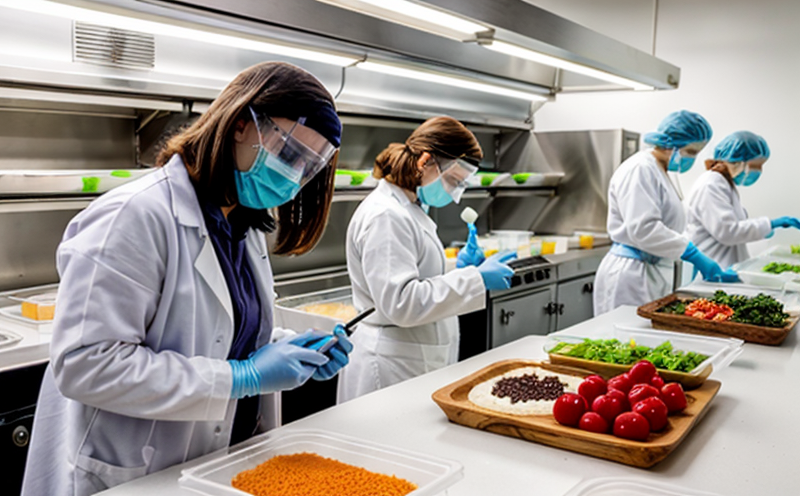ISO 15216 Hepatitis A Virus and Norovirus Testing in Food
The ISO 15216 standard provides a robust framework for the detection of Hepatitis A virus (HAV) and noroviruses in food products. This service is crucial for ensuring food safety, as these viruses can cause significant health issues if present in contaminated foods. The standard outlines stringent protocols for sample preparation, extraction methods, quantification techniques, and reporting procedures to ensure accurate and reliable test results.
The process begins with the collection of samples from various points in the supply chain—this could be raw ingredients, intermediate products, or final food items. Once collected, these samples undergo meticulous processing steps that include homogenization, filtration, and nucleic acid extraction. The extracted nucleic acids are then subjected to real-time reverse transcription polymerase chain reaction (rRT-PCR) assays for accurate detection.
The significance of this testing cannot be overstated in the context of global food safety initiatives. Regulatory bodies worldwide have stringent guidelines aimed at minimizing the risk of viral contamination in food products. By adhering to ISO 15216, laboratories can provide critical data that helps manufacturers meet these regulatory requirements and safeguard public health.
The standard also emphasizes the importance of quality control measures throughout the testing process. This includes the use of certified reference materials (CRMs) for calibration purposes, proficiency testing schemes to validate test methods, and regular audits to ensure consistency in results. The goal is to maintain high standards of accuracy and reliability that are essential for consumer trust.
The application of ISO 15216 extends beyond mere compliance; it plays a pivotal role in enhancing the reputation of food producers by demonstrating their commitment to safety and quality. This service not only helps in identifying potential hazards early but also aids in addressing them promptly, thereby reducing the risk of outbreaks.
Furthermore, the standard ensures that testing laboratories are equipped with state-of-the-art equipment and trained personnel who can handle complex samples effectively. The use of advanced technologies such as next-generation sequencing (NGS) for comprehensive viral profiling further enhances the capabilities of this service.
Why It Matters
Food safety is paramount in today’s world, and the presence of viruses like HAV and noroviruses in food can lead to severe health consequences. ISO 15216 provides a standardized approach that ensures accurate detection and quantification of these pathogens, thereby contributing significantly to public health.
For quality managers and compliance officers, this service offers a reliable tool for ensuring product safety and meeting regulatory standards. R&D engineers can use the data generated from ISO 15216 testing to develop safer food products and improve manufacturing processes. Procurement departments benefit by having clear criteria for selecting suppliers who adhere to stringent hygiene practices.
The importance of this service is underscored by its role in preventing outbreaks and protecting consumer health. By detecting these viruses early, laboratories can provide actionable insights that help prevent contamination events and ensure product safety throughout the supply chain.
Applied Standards
| Standard Name | Description |
|---|---|
| ISO 15216-1:2018 | General requirements and procedures for the detection of hepatitis A virus (HAV) in food. |
| ISO 15216-2:2019 | Specific requirements and procedures for the detection of noroviruses in food. |
Benefits
- Achieves high accuracy and reliability in detecting HAV and noroviruses.
- Ensures compliance with international food safety standards.
- Promotes consumer trust by providing transparent testing practices.
- Supports the development of safer food products through advanced analytical techniques.





